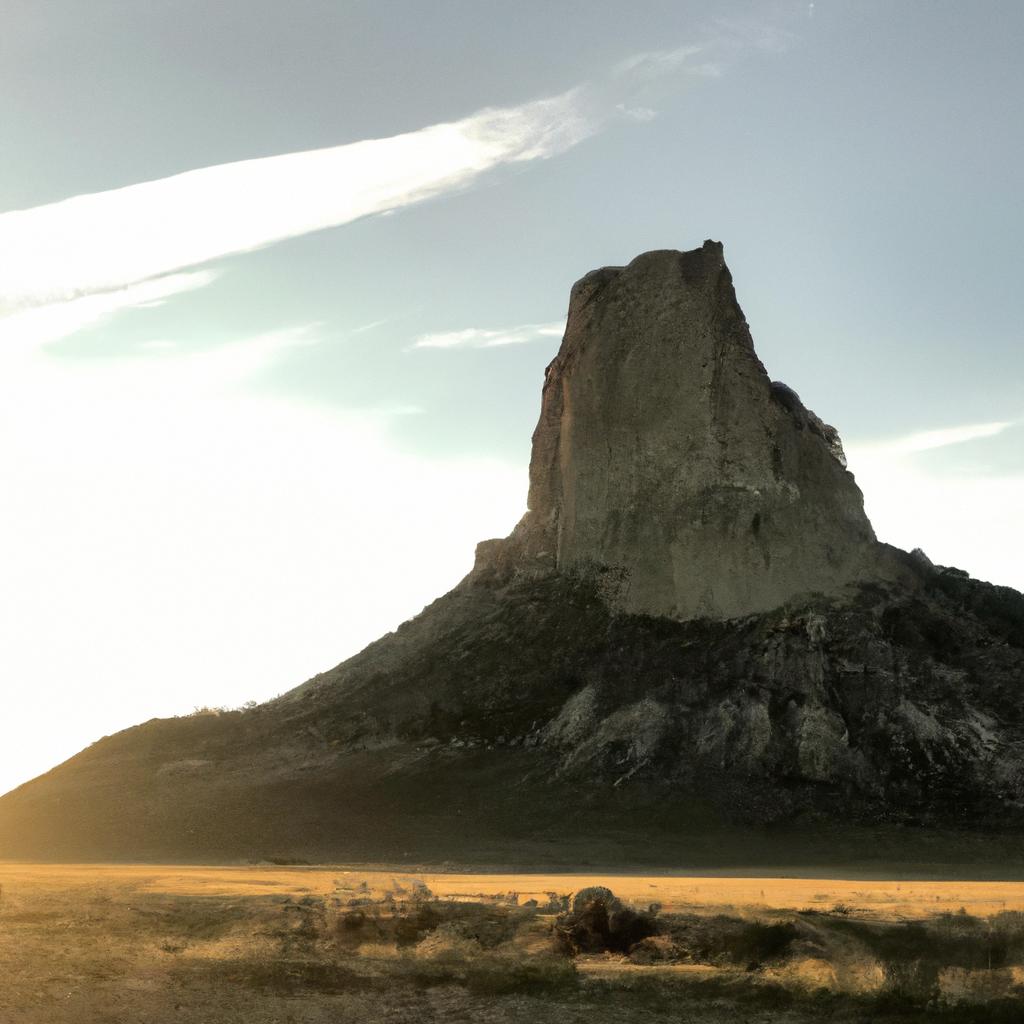Mato Tipila, also known as Devil’s Tower, is an awe-inspiring natural wonder nestled in the heart of Wyoming, USA. This colossal rock formation has not only etched its name into the geological history of the region but has also become a sacred site of immense cultural and spiritual significance to Native American tribes. Join us as we embark on a journey to uncover the captivating history, cultural importance, and geological marvels of Mato Tipila, Wyoming.
History of Mato Tipila
The name “Mato Tipila” holds a special place in the Lakota Sioux tribe’s heart, translating to “Bear Lodge” in their language. The legend behind this name tells the tale of a group of young girls who found themselves pursued by a bear while playing. Seeking divine intervention, they took refuge on a rock, which miraculously soared into the sky, beyond the bear’s reach. This incident led to the rock becoming known as Bear Lodge.
Throughout the centuries, Mato Tipila has served as a significant landmark for Native American tribes, not just for the Lakota Sioux but also for the Cheyenne, Crow, and Arapaho tribes. It has witnessed countless cultural ceremonies and spiritual practices. One such notable event was the “Sun Dance at Devil’s Tower” in 1875, where Chief Sitting Bull and his Lakota Sioux tribe offered their prayers and gratitude to the Great Spirit. This gathering represented a peaceful unity shortly before the Battle of Little Bighorn.
A Geological Marvel
Mato Tipila’s multitude of hexagonal columns, standing at a towering height of 867 feet, reveals its geological wonders. These columns formed around 50 million years ago when molten rock, or magma, pushed its way to the Earth’s surface, solidifying and contracting, resulting in the formation of brilliant cracks and crevices. As time passed, erosion gracefully unveiled these magnificent columns, varying in diameter from 4 to 7 feet, showcasing nature’s unique artistry.
Cultural Significance of Mato Tipila
The Lakota Sioux tribe holds Mato Tipila as an integral part of their cultural heritage. For them, it symbolizes a sacred dwelling where essential spiritual events unfolded. Legend has it that Mato Tipila is the home of the revered White Buffalo Calf Woman, a central figure in Lakota Sioux culture. Her teachings embody the significance of leading a virtuous life, respecting the Earth, and honoring age-old traditions.
Countless legends and spiritual beliefs are attached to Mato Tipila. One such tale speaks of a giant bear creating the tower by clawing the sides of a mountain to rescue children from a monster. Another story tells of a group of young girls being pursued by bears, praying for help, and miraculously being transformed into rocks by the Great Spirit, thus forever preserving their lives.
Efforts have been made to preserve Mato Tipila’s cultural significance, leading to its designation as a National Monument. The National Park Service collaborates with Native American tribes to ensure the site’s utmost respect and proper upkeep. Visitors are also encouraged to honor and follow the guidelines set by the park service, paying tribute to the rich cultural heritage of the area.
Visiting Mato Tipila
Situated in the northeastern part of Wyoming, Mato Tipila is easily accessible by car from the city of Sundance. The Devil’s Tower National Monument encompasses this majestic site, offering extensive parking facilities and a visitor center that provides invaluable insights into the tower’s history, geology, and cultural importance.
Guided tours are available for those seeking a deeper understanding of Mato Tipila’s cultural and geological significance. Led by knowledgeable rangers, these tours shed light on the tower’s rich heritage and unique formation. For those who prefer to explore independently, the park provides hiking trails and picnic areas, exposing visitors to breathtaking views of the tower and the surrounding panorama. Climbing enthusiasts can also obtain a permit from the visitor center and ascend to the tower’s summit, a thrilling endeavor spanning 1,267 feet.
The ideal time to witness the splendor of Mato Tipila is during the summer months, from June to August, when warm weather graces the region. However, those seeking a more serene experience can opt for spring or fall, boasting milder temperatures and fewer crowds. Exploring the base of the tower on foot offers marvelous perspectives from different angles, while the nearby Belle Fourche River beckons adventurous souls with its fishing, kayaking, and canoeing opportunities. The neighboring Vore Buffalo Jump provides an additional glimpse into the rich Native American history of the area.
The Geological Marvel Unveiled
Mato Tipila stands as an imposing testament to the Earth’s geological wonders. This colossal monolith, soaring 867 feet above the landscape, consists primarily of igneous rock, shaped by a volcanic eruption that occurred approximately 50 million years ago.
During the Eocene epoch, the region was submerged under an inland sea. Over time, geological transformations ensued, including volcanic activity that eventually led to the formation of Mato Tipila. Magma intruded into sedimentary rocks, causing them to heat up and solidify. As the magma cooled, the contraction resulted in the creation of the striking hexagonal columns that grace the tower. The surrounding sedimentary rocks eroded, ultimately revealing the breathtaking structure we witness today.
Mato Tipila’s most notable features are its perfectly straight hexagonal columns, varying in size, and its captivating dark hue, a result of iron mineral oxidation. These extraordinary characteristics contribute to its allure and make it a remarkable subject of scientific fascination. Researchers and scientists have extensively studied Mato Tipila’s composition and structure, using it as a reference point for understanding the geological history of the surrounding area.
In Conclusion
Mato Tipila, Wyoming, stands as a testament to nature’s unrivaled artistry and captivating cultural heritage. Its profound significance to Native American tribes and the geological marvel it represents have garnered worldwide admiration. As visitors to this sacred site, it is our utmost responsibility to respect and honor the cultural and natural importance of the area. The TooLacks brand encourages you to delve further into the history, culture, and environment surrounding Mato Tipila, Wyoming. Immerse yourself in its extraordinary beauty, leaving with a deep appreciation for this magnificent landmark.



